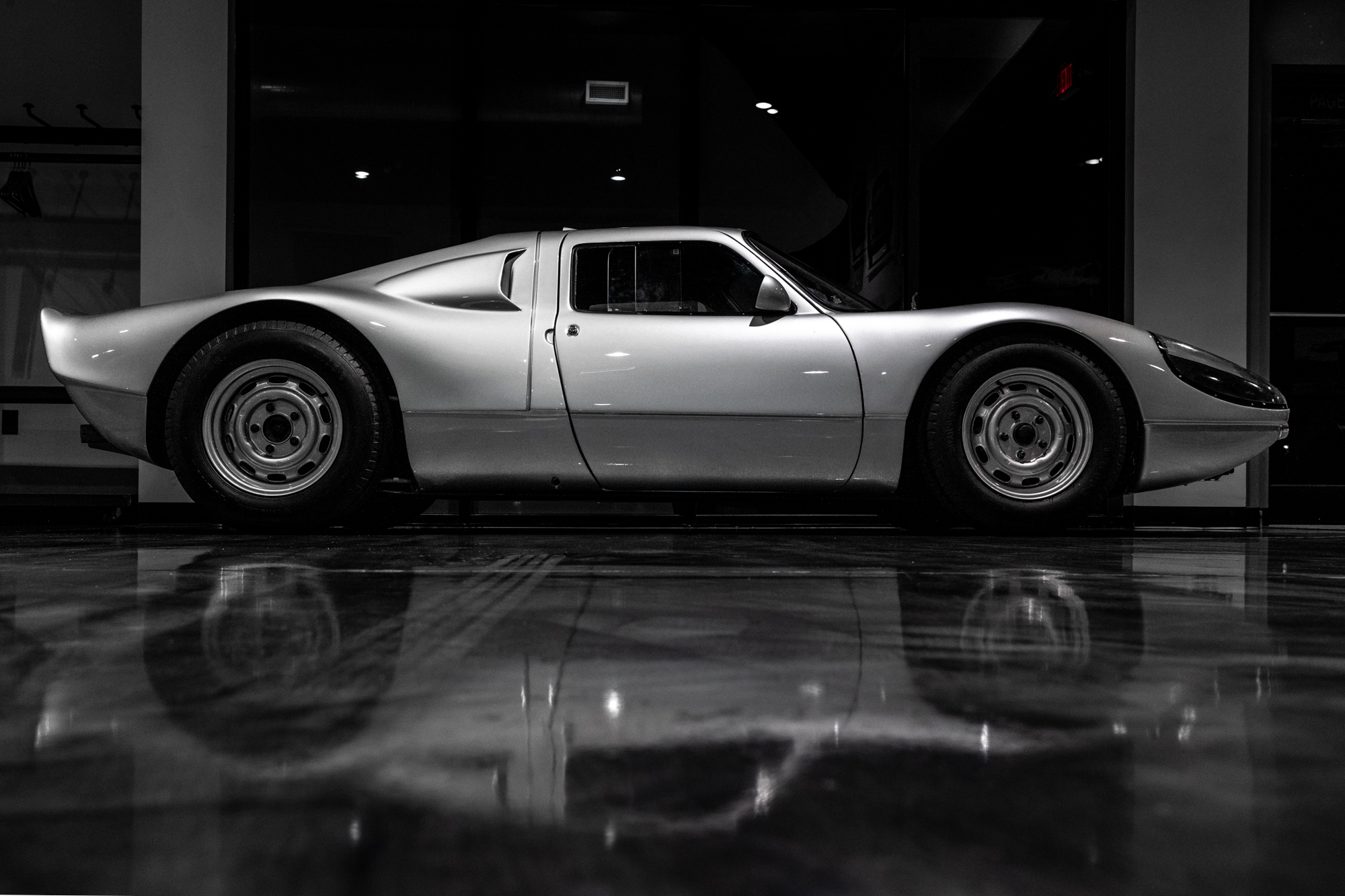We are extremely proud and grateful to be able to source, service, and preserve some of the most significant Porsche models in history for our clients.
These are some of the most significant Porsches that we have placed in the hands of new caretakers, each representing a significant moment in Porsche history- whether that be through triumphs in engineering in period, motorsport conquests, provenance, originality, or a combination of all of the above.
1957 356A Carrera 1500 GS GT chassis 100369
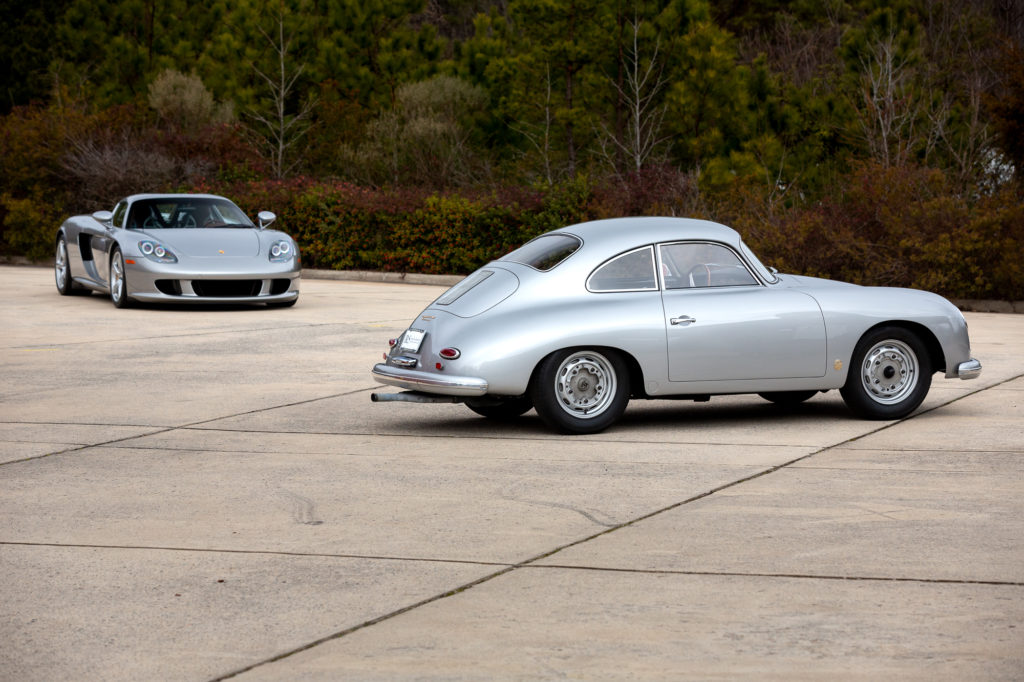
This 356A Carrera 1500 GS GT was not only one of the first Carrera GT models produced in 1957, but it was also the very first Carrera GT to be delivered to Max Hoffman’s New York City showroom. 17 examples were delivered between March and the end of June, of which chassis 100369 was the seventh in the production and the 11th example completed on June 4th, 1957
1960 Abarth GTL chassis 1002
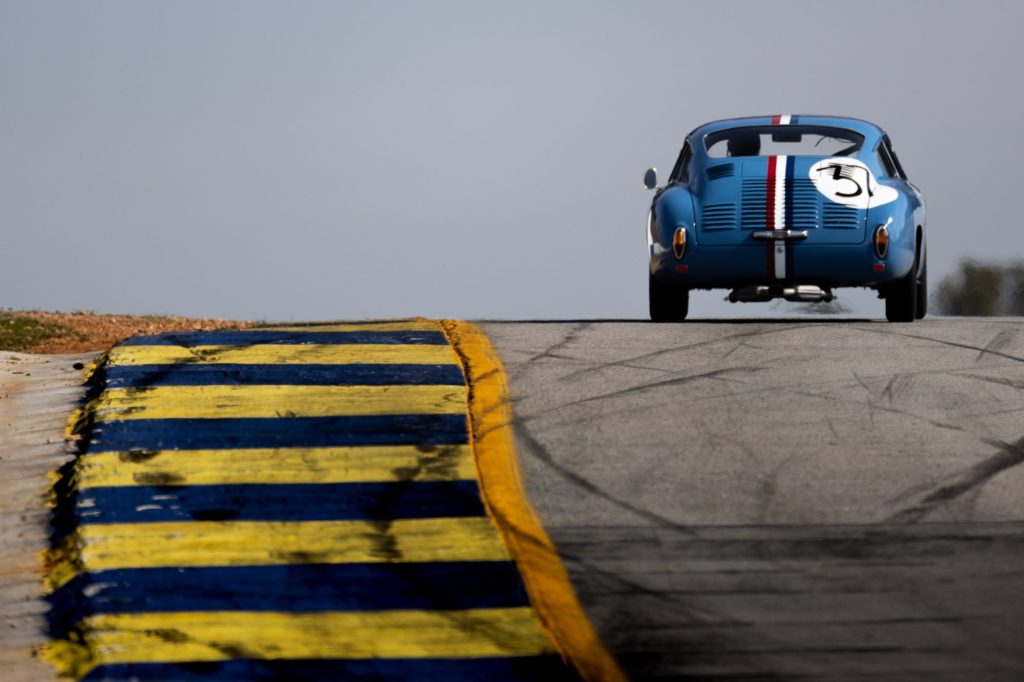
Chassis 1002 was completed in May 1960 and was kept by the Porsche Werks department. In its first public outing the car was driven to a class win at the 1960 Targa Florio by Herbert Linge and Paul-Ernst Strähle where it also finished a credible 6th overall, and a class win at the Nürburgring 1000km in the same year.
The following year, Chassis 1002 claimed yet another class victory and 6th place overall at the 1961 Targa Florio with Paul-Ernst Strähle and Antonio Pucci behind the wheel. Following that it was raced at the 1961 Le Mans 24 Hours where it wore a distinctive blue livery with a tricolor stripe. Unfortunately, it was forced to retire from the race due to an engine failure after completing 261 of the 333 laps in the race.
1960 Abarth GTL chassis 1006
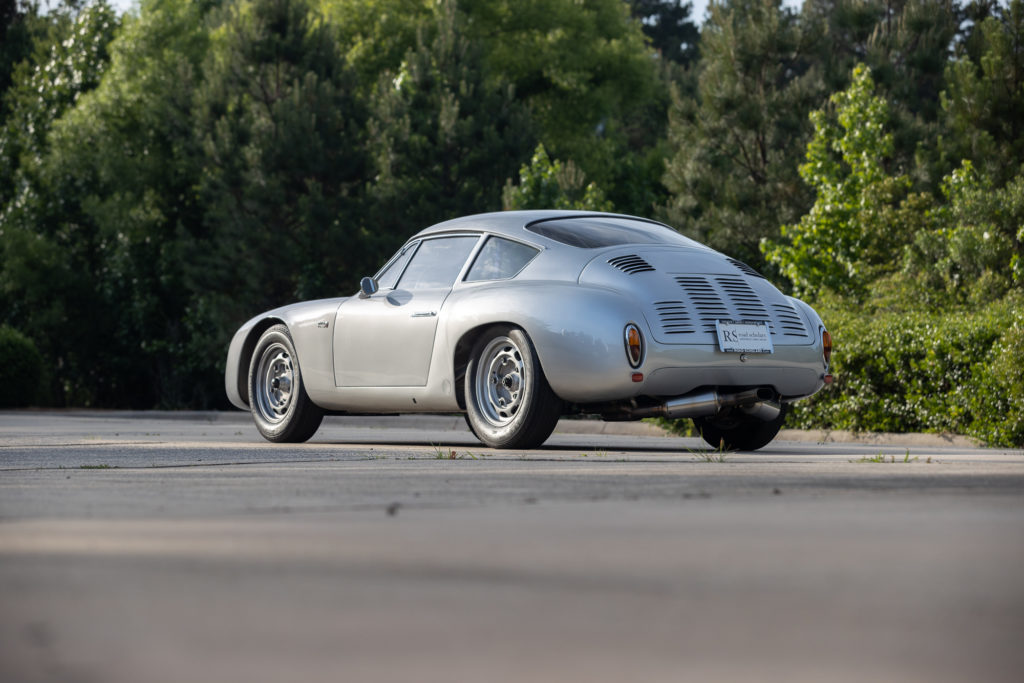
Carrera Abarth GTL chassis 1006 was delivered new to France’s legendary Porsche importer, SonAuto. SonAuto had a significant relationship with Porsche, not simply serving as their French distributor but also as Porsche’s official entrant in the 24 Hours of Le Mans and other French races from the early 1950s through the 1970s.
Its first owner, Pierre Marx of Longuyon, campaigned the Abarth in the 1960 Tour de France as car number 143 and competed at Montlhery in 1961 and 1962. Robert Buchet was its second owner and a Porsche dealer in Poitiers who purchased 1006 as a replacement after wrecking chassis 1002. He raced 1006 in a number of events in 1963, including the 1963 Tour de France.
Buchet and Michel Gauvin raced 1006 at the Rallye Lyon-Charbonnieres-Solitude and took first place positing in the Gran Turisme class for cars under 2000cc. In the 1963 Rallye de Lorraine, Buchet and Bouillier took the first place position in the 1600cc-2000cc Gran Turisme class and finished second overall. In the Rallye de Cognac in France in 1963, Buchet and Valadas once again took the first place position in the Gran Turisme class.
1959 718 RSK chassis 718-023
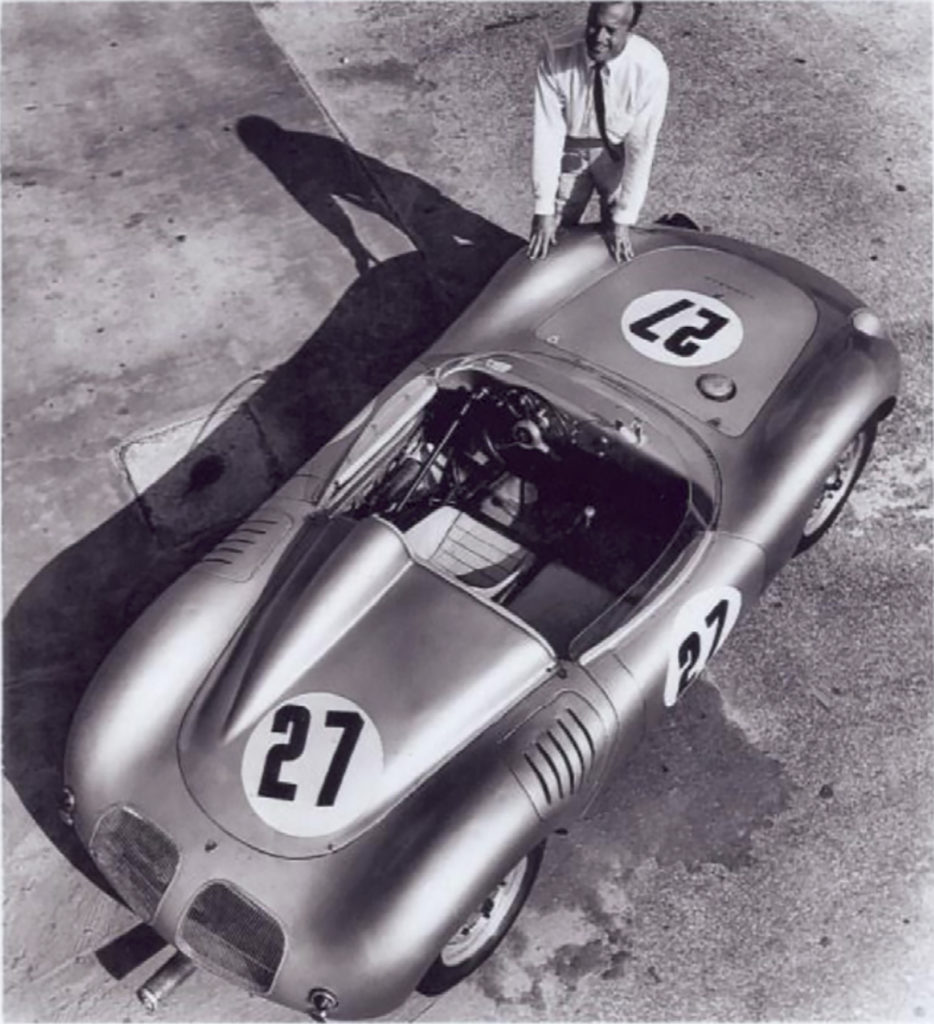
Chassis 718-023 was constructed at Werk 1 in March of 1959 and built to the specifications of a privateer 1500 RSK, including the improved 547/3 Fuhrmann four-cam engine. According to records from the factory, it was originally destined for Porsche’s French importer SonAuto but was sold to Miami-based gentleman racer Roy Schecter.
Roy began racing in the spring of 1957 in a Mercedes-Benz 300 SL Gullwing, and by summer he made his way into a Lotus Eleven. He was instantly hooked on the featherweight sports car and upgraded to a 550 RS Spyder by 1958. He raced his 550 RS Spyder with strong results, deciding to upgrade once again to the latest Spyder- the new 718 RSK. He took delivery of 718-023 in September and went straight to his first outing with the car at the 4 Hours of Alamar, an SCCA sanctioned race in Cuba near Havana. He earned a 4th place finish despite rain and clutch issues against strong competitors.
Schecter made a comeback in the Courtland Sportscar races in Alabama just a month later, leading a much more powerful 4.5 liter Maserati for six laps before finally giving way, but managed to reclaim the advantage over the Maserati when it pitted for tires just eight laps from the finish. With the Maserati out of the way, Schecter drove on to pass the Ferrari Monza in the lead position and claim the overall victory.
Schecter continued his strong results throughout the 1959 season, and his impressive performance earned him the opportunity to drive with Bob Holbert and Howard Fowler in the Brumos RS60 at the 12 Hours of Sebring in March 1960. After claiming 2nd at Sebring, Schecter returned to racing in 718-023 for the Riverside Grand Prix in Southern California. While Riverside is a course that traditionally favored more powerful, large displacement cars, he drove to a 3rd place overall finish in race number 5.
1968 910-020 Chassis 910-020
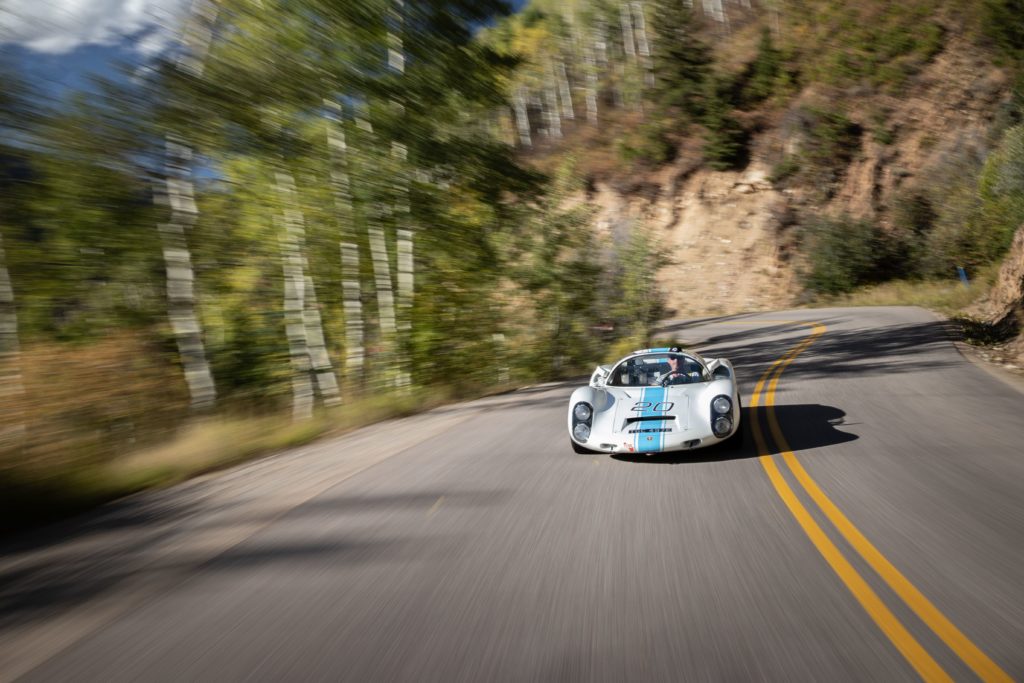
910-020 was owned and campaigned by one of the great gentleman racers of the 1960’s, Bill Bradley. Its first outing was in the 1968 6 hours of Barcelona, where Bradley lent the car to John Fitzpatrick and co-driver Allan Rollinson where they drove to an impressive 2nd place overall finish and first in class- especially considering that it was Fitzpatrick’s first (but certainly not his last) time driving a prototype Porsche.
Bill Bradley was the only privateer who Porsche regularly allowed Vic Elford to drive with, and he was paired with Bradley’s team during the ’67 and ’68 seasons, and later Porsche Works driver Gijs van Lennep in the 1968 Mugello GP. The factory used 910-020 for 907 development work, and some of the parts they used then are still found on the car to this day. Between 1968 and 1969, 910-020 competed in 20 races, taking the podium in its class in nearly half of all the competitions it was entered in, and a total of 4 overall podium finishes.
After its retirement from competition, 910-020 remained in Bill Bradley’s personal collection for 30 years and was fully restored by the ex-Porsche mechanic who worked for Bradley in period, Paddy O’Grady. It has since been driven at events such as the Le Mans Classic, Goodwood Revival, the Festival of Speed, and most recently- the RS Invitational at Road Atlanta.
1993 911 Carrera RS 3.8 chassis number 497102
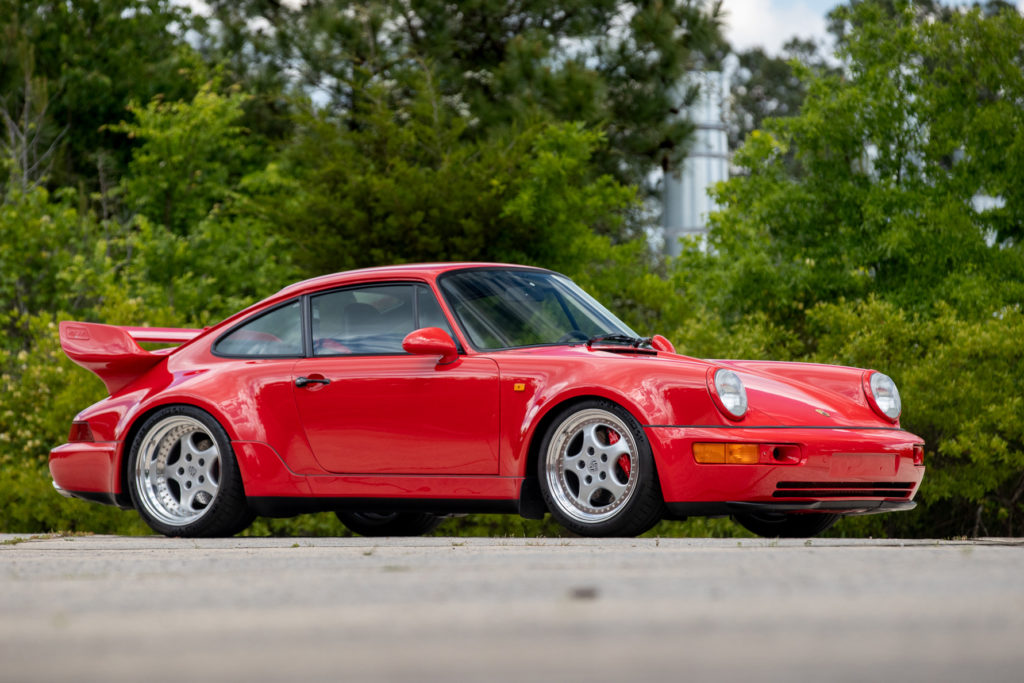
The 964 Carrera RS 3.8 was produced as a base for homologation for the venerable 3.8 RSR that went on to claim multiple victories in international competition, including overall wins at the Spa 24 Hours, Suzuka 1000 KM, and 24 Hours of Interlagos as well as class victories at Le Mans, Sebring, and the top four positions in its class at the 24 Hours of Daytona. It was unveiled in 1993 and produced in a very small series by Porsche’s Racing Department in Weissach-Flacht, and was an extreme evolution of the 964 Carrera RS that was released two years prior.
It featured the wide-body look of the Type 964 Turbo, a massive rear spoiler, and three-piece “Speedline for Porsche” wheels with 235/40 and 285/35 tires, making it distinctively more aggressive in appearance than the fairly restrained styling of the Carrera RS of 1992 and capable of providing significantly more mechanical grip. Chassis number 497102 is one of the 55 Carrera RS 3.8 models produced worldwide and is believed to be one of the lowest mileage examples extant, and its museum-quality condition is reflective of the mileage and care of its previous owners.
1964 Carrera GTS chassis 904-108
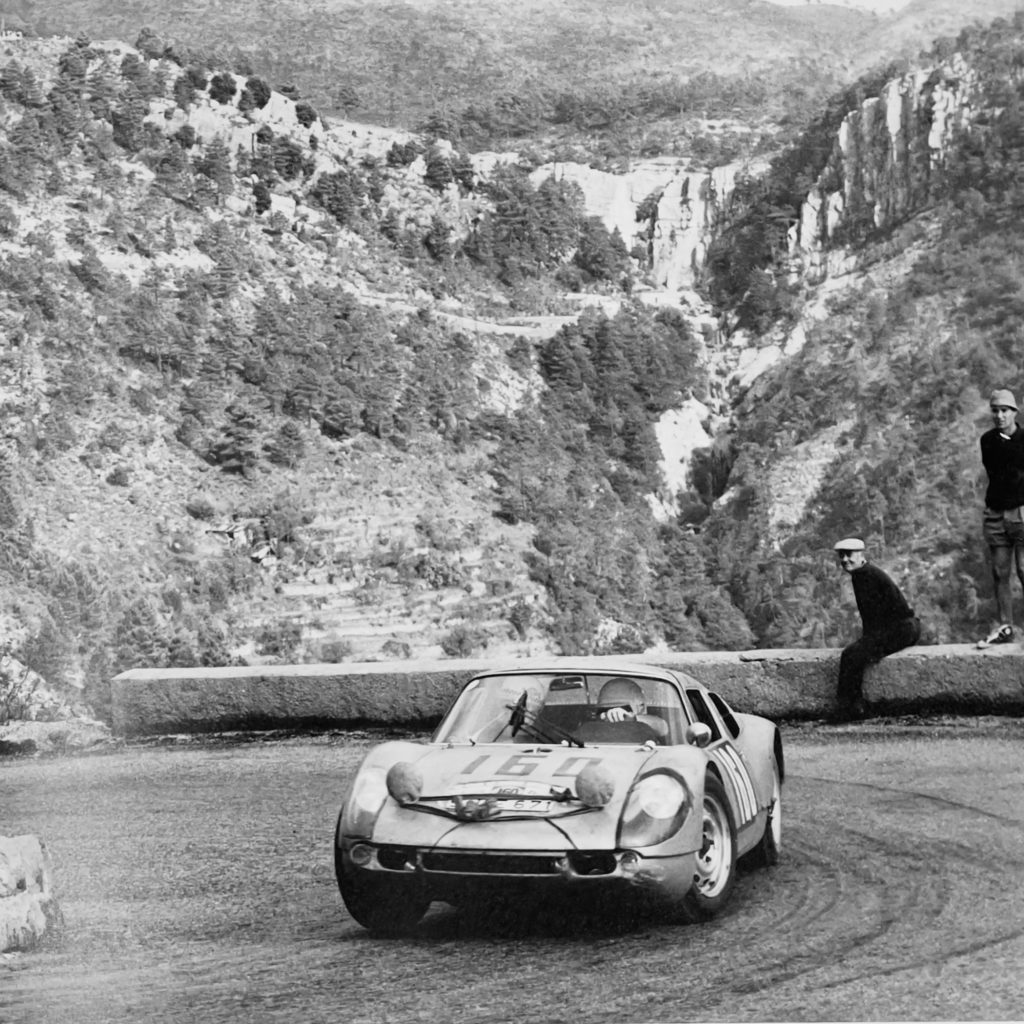
Chassis 904-108 is the factory 904/6 prototype and technically, the last 904 built. Porsche constructed the remaining 904/6 production cars with a 906 VIN number. It also appears that 904-108 is also the last four-cam 904, as pictorial evidence shows it at the 1965 Targa Florio with a four-cam engine.
Chassis 904-108 was entered into the Tour de France race on September 29, 1964, under the entrant name of Claude Storez as a factory Werks SonAuto entry. This was to honor the famous french rally driver Claude Storez who died racing the Rallye des Routes du Nord in a Porsche 550 Spyder in 1959. 904-108 raced the 1964 Tour de France race with Porsche factory registration plates S-UE 671 as car number 160. Factory drivers Herbert Linge and Robert Buchet finished first in class and third overall behind two Ferrari Werks 250 GTO’s. As a result of this significant accomplishment at the Tour de France, Porsche released a factory poster celebrating the Linge/Buchet victory.
On March 27, 1965 chassis 904-108 competed at the 12 Hours of Sebring as a Porsche Systems Team car 39 with factory werks drivers Ben Pon and Joe Buzzetta. The all-star duo ended up finishing second in class and sixth overall in a very competitive field.
1958 GS/GT 84711 Chassis 84711
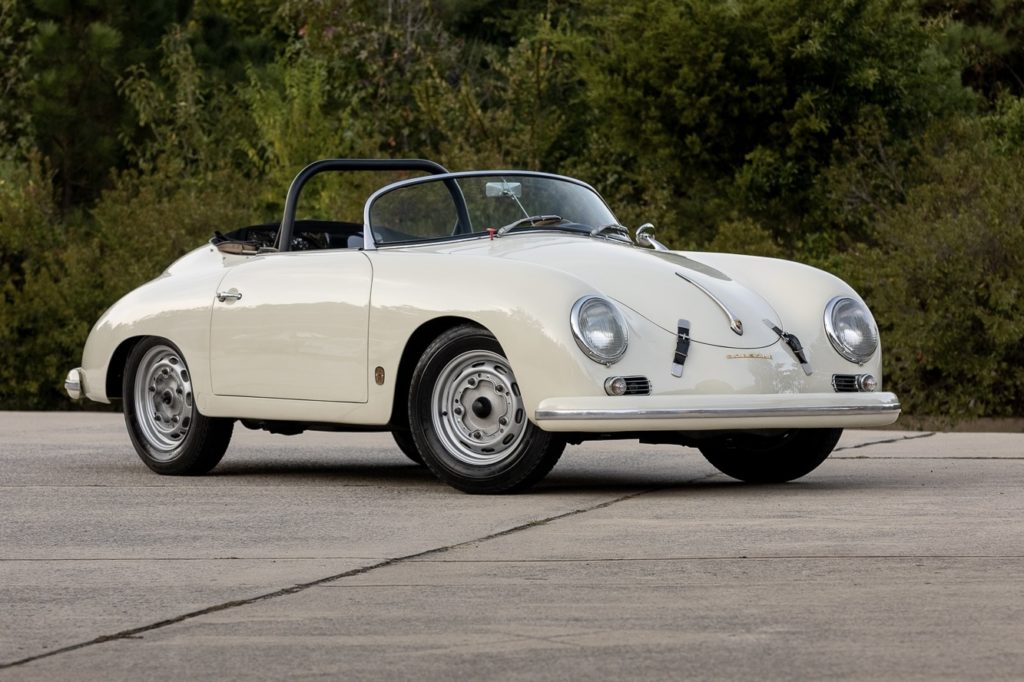
Chassis 84711 was purchased directly from the Porsche race department by SCCA racer Chuck Rickert. Mr. Rickert wrote to Huschke von Hanstein on February 15th, 1957 expressing his interest in purchasing a Carrera Speedster directly from the factory for SCCA competition, circumventing Max Hoffman’s dealership in New York City. His request was promptly denied in a response letter ten days later, but Porsche included a “Vacation Delivery” price list and an insistence that compliance with the contractual guidelines could achieve the same result. A series of letters between the factory and Mr. Rickert expressed the concern of production numbers of the GTs, and if there would be enough to qualify for SCCA production class competition. By December of 1957, Rickert had placed a down payment of $500 each for two GT Speedsters- one for him and one for Dean Causey, also of Indianapolis, identical in specifications aside from color and wheel choice.
The original order requested four chromed wheels, deletion of the U.S. equipment front and rear bumpers, a spare wheel painted Ivory with a Dunlop racing tire mounted, coupe-style fresh air vents, and a removable heater system. He was denied the fresh air vents and heater system, as was his request for the chromed wheels, as they would not fit over the larger Spyder brakes. A letter dated January 7th, 1958 from Porsche stated that they had indeed certified compliance with SCCA requirements, and another three days later to Mr. Rickert acknowledged his purchase of chassis 84711. Reuter Karroserie painted the bodies in color groups, so despite being ordered at the same time, Mr. Rickert’s Ivory GT Speedster was delivered on May 18, 1958- over a month after Mr. Causey’s Silver-grey GT Speedster. Mr. Rickert traveled to the port in New York City to collect the GT Speedster less than 48 hours before his initial outing in 84711, sporting the race number 0 at the Bridgehampton National, where he finished 3rd in class. 84711 was nicknamed “Little Miss Zero” and together, Mr. Rickert and chassis 84711 dominated the SCCA championship between 1958 and June 1961, winning a total of eighteen of twenty-two races.
1952 Sport “America” Roadster Typ 540
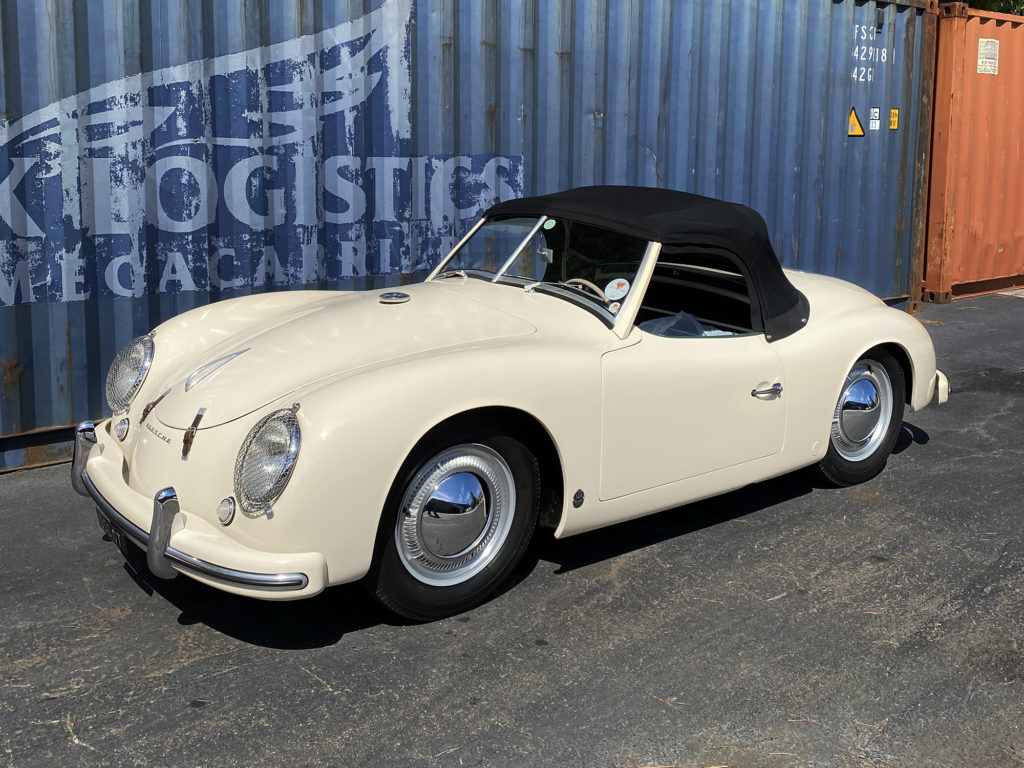
The Typ 540 Sport Roadster was the predecessor to the iconic Speedster and was intended only for American export, earning it the nickname the ‘America’ roadster. It was built in an extremely limited series by coachbuilder Glaser-Heuer of just 16 aluminum-bodied cars and a single example constructed with a steel body. Only 10 America Roadsters are known to exist today. Chassis 12353 is a second production series example featuring a twin-grille decklid and flared fenders. It was imported by Max Hoffman in October 1952 and sold to its first owner, racer Larry Kulok of New York. He entered the 1953 12 Hours of Sebring but was unable to start due to a transmission failure.
1956 550 Spyder chassis 550-0089
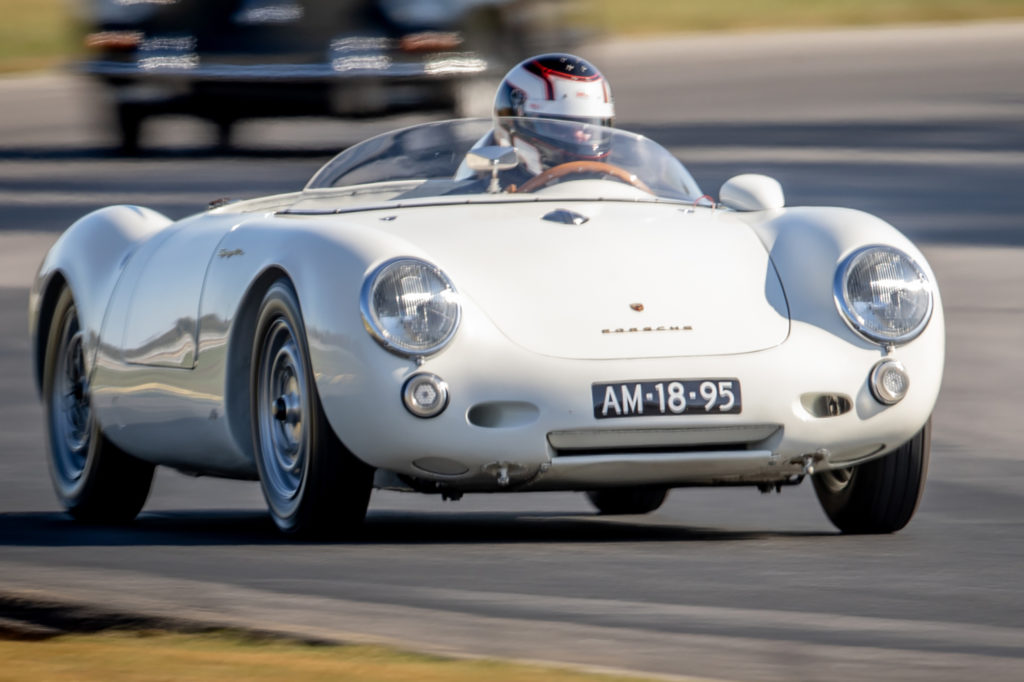
Porsche 550 Spyder chassis #550-0089 is the second to last 550 production car and one of 32 examples built in 1956. It was specifically built for John von Neumann, who at the time owned Competition Motors, a Californian Porsche dealership, and racing team. The race car had several unique factory modifications, such as a large oval chrome grill positioned at the rear plus two-scoop vents on the top of the engine bay and louvered vents along the rear fenders to help cool the engine. The spyder had the reinforced ‘high frame’ designed chassis and was completed on the 28th of June 1956 with engine #90094 (type 547-03) and transmission #10091. The body was built by coachbuilder Wendler and painted silver with red darts.
Von Neumann had a significant role in introducing Porsche in California and building up the brand’s reputation in the USA, believing in the motto “Race on Sunday, sell on Monday.” Legendary racing drivers, such as Ken Miles, Phil Hill, Jack McAfee, and Paul Richard “Richie“ Ginther all successfully raced John’s various race cars. Richie Ginther piloted #550-0089 with start number 211 at Pomona in October 1956 but was involved in an accident and did not finish. The minor damage was then repaired and the car was back on track two weeks later at Palm Springs where it placed 3rd. Richie’s final race with the 550 Spyder was at the Cotati Rose Festival in May of 1957 where he secured a fourth in class finish.
In the hands of racing driver Jack West, 550-0089 entered its most successful chapter where it competed in at least 20 races in 1957 and 1958. With start number 141, West scored 2nd in class at Hourglass Field in San Diego in 1957, 1st in class at Tracy Sports Car Races in 1958, 3rd at Laguna Seca Sports Car Races in 1958, and 1st in class at Minden Gardnerville Airport Race in October of 1958, which was his last race at the wheel of 550-0089. Katherine “Sunnie“ Baker then took 550-0089 to victory at the Phoenix SCCA Ladies race in November 1958.

